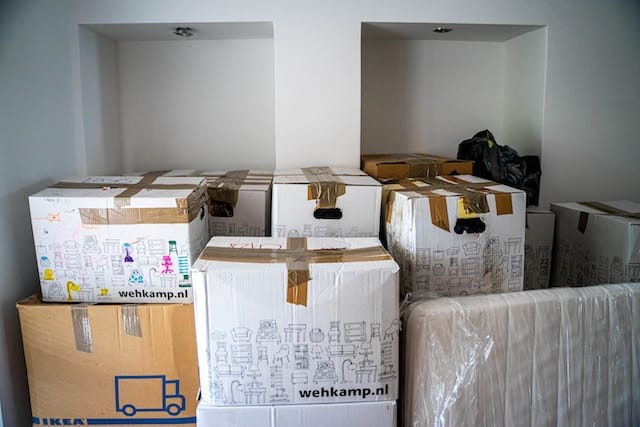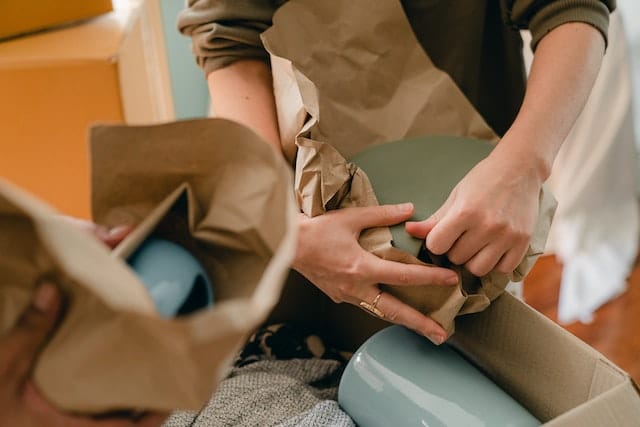Packing for a move is a monumental task, regardless of the destination. Did you know that Florida was the fastest-growing state in 2022 due to the allure of its sun-kissed beaches and vibrant lifestyle? However, the tide seems to be turning.
People are leaving, citing reasons like low wages and long, hot summers. Even popular cities like Fort Lauderdale, known for its stunning beaches and robust community, are feeling the exodus. Despite its appeal, the city’s allure fades when faced with practical considerations like crowded beaches and high living costs.
Amidst all this, proper packing still remains crucial for a smooth transition, either into or out of the city. Here are nine handy packing tips to facilitate your move.
Begin with a Detailed Plan
Starting your moving process with a clear, detailed plan sets a firm foundation for a smooth transition. It’s essential first to identify which items will make the journey with you and which are better off donated, sold, or discarded. A room-by-room approach can make this task more manageable. Focusing on one space at a time makes you less likely to feel overwhelmed.
Another important aspect of your plan is a timeline. A well-structured schedule breaks the monumental task of packing into manageable chunks. This eliminates last-minute panic, ensuring each item is packed carefully, and nothing gets left behind.
Choose the Right Moving Company
Selecting the right moving company for your transition is crucial. With Fort Lauderdale’s high cost of living, 22% above the national average, many seek more affordable living conditions elsewhere. These transitions are not easy, and the right assistance can make a world of difference.
As you browse various Fort Lauderdale moving companies, look for those that provide comprehensive services, from packing to unpacking. Finding a professional and reliable service to streamline your move is important.
Reputable companies help with moving and take the burden of packing and unpacking off your shoulders. This choice can make the transition smoother and more manageable, bringing peace to an otherwise stressful process.
Gather Quality Packing Supplies
Investing in high-quality packing supplies is paramount for a successful move. Sturdy boxes, for instance, are less likely to collapse under weight, protecting your belongings. Bubble wrap is another essential item, especially for fragile items like glassware or electronics.
It acts as a cushion, reducing the impact of shocks during transit. Don’t forget heavy-duty packing tape — it ensures your boxes stay securely sealed. Finally, markers for labeling your boxes help you stay organized. Indicate what’s inside the box and which room it belongs to in your new home. This small step can save you a lot of confusion when unpacking.

Pack Room by Room
Taking a room-by-room approach to packing helps maintain organization and significantly reduces stress. By focusing on a single space at a time, you avoid the pitfall of mixing items from different rooms, which could create a mess when you start unpacking.
Labeling each box with its designated room is another simple yet powerful tactic. This allows you to easily identify what’s inside without opening it, and it also guides the movers when they’re unloading at your new home.
Unpacking becomes easier, too, as items belonging to a specific room are already grouped together. This systematic approach turns the chaos of moving into a manageable, less demanding task, making your transition to a new home easier and more enjoyable.
Heavy Items in Small Boxes
Packing heavy items, such as books or kitchenware, can prove challenging due to their weight. One helpful trick is to use smaller boxes for these possessions. Although it may seem counterintuitive, it’s far easier and safer to handle multiple small boxes than one large, bulky one.
You’re not only protecting your belongings, but you’re also saving yourself from potential injuries. Lifting excessively heavy boxes could strain your back, creating unnecessary discomfort or even harm.
Additionally, overfilled boxes risk breaking or tearing under the weight. Distributing heavy items among smaller boxes ensures safe and manageable transportation.
Wrap Fragile Items Correctly
Handling delicate items during packing requires diligence. It’s essential to wrap each piece thoroughly with bubble wrap and packing paper to guard against jolts during the journey. Once you’ve done this, place the item centrally in the box to minimize exposure to potential harm.
Next, consider using soft possessions such as clothes, towels, or bed linens as extra buffers. These serve as protective layers around fragile items, cushioning the impact and limiting movement inside the box. The aim here is to curtail any shifting space for your items, which in turn lowers the chance of them breaking.

Utilize All Available Space
Filling box voids with tiny objects or balled-up packing paper is a smart strategy to keep items stable and limit their motion during the journey. Realize the capacity of things you already possess. Suitcases, bins, and even furniture drawers can double as additional packing vessels.
This approach cuts down on the need for extra boxes and optimizes what you own. Remember, the less your items move, the less likely they are to get damaged. A well-filled box is one where every piece fits tightly. Smart use of all accessible space enhances the safety of your belongings and brings efficiency and affordability to your move.
Keep Essentials Separately
Moving involves having certain items within reach as soon as you arrive at your new residence. For this reason, allocate a specific bag or box for necessary items, which you should pack last and unpack first.
Your essentials box might include toiletries, several outfits, crucial electronics like your laptop and phone, chargers, and critical papers. This approach spares you the hassle of rummaging through countless boxes following an exhausting move.
Adopting this method guarantees a smooth transition into your new home during the initial days, providing a grace period before you dive into unpacking all your possessions.
Avoid Packing Hazardous Materials
Certain materials are classified as hazardous and are not allowed by most moving companies due to the risk they pose. These include items that are flammable, corrosive, or explosive. Examples are gasoline, paint thinner, bleach, and fire extinguishers, among others.
These materials can cause harm, damage your belongings, or even lead to a moving truck fire if they spill or react during transit. Safely dispose of these items ahead of your move, or make plans to transport them separately if needed.
Reach out to local waste facilities to learn about proper disposal procedures. Remember, safety always comes first. Ignoring these restrictions puts your belongings at risk and the well-being of those involved in the moving process.
Conclusion
Shifting homes might seem complicated, but meticulous planning and readiness can make it more approachable. Begin with a comprehensive strategy, purchase reliable packing materials, and apply thoughtful packing methods.
It’s important to prioritize safety — steer clear of packing risky materials. Finally, opt for trustworthy moving professionals to ensure a seamless transition. The initial hard work you put in will make setting up in your new home a breeze. Best wishes for your relocation!












Leave a Reply